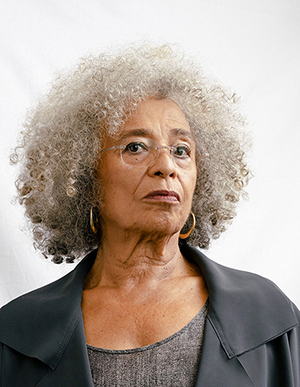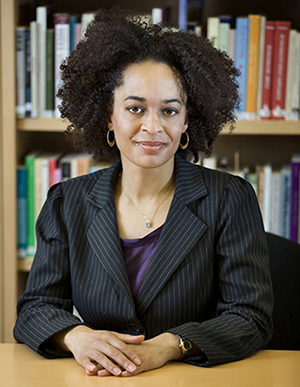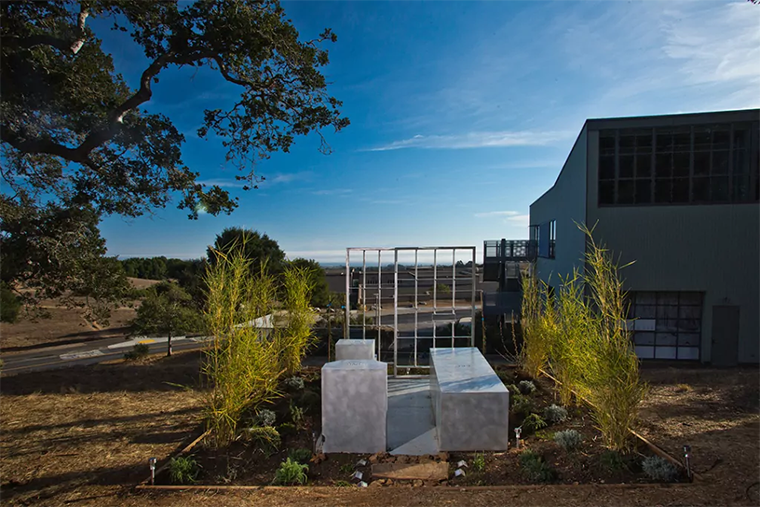On the recent panel “Imagining Freedom,” presented by the Mellon Foundation, UC Santa Cruz Associate Professor Dr. Gina Dent and Distinguished Professor Emerita Angela Y. Davis participated in a live streamed conversation on mass incarceration, the toll it takes on society, and ways the arts and humanities drive opportunities for civic, scholarly, and creative engagement across the criminal-legal system.
Named for an initiative launched with a $125 million grant, Imagining Freedom’s purpose is to make obvious the harm the American carceral state has on society, and people of color and those in poverty disproportionately, the initiative’s site explains. Alongside Pulitzer Prize-winning writer and professor Mitchell S. Jackson and artist and curator Jesse Krimes, Dent and Davis spoke on ways “incarceration denies millions of people full participation in American society”—and how in turn, “American society is denied their artistic, cultural, and intellectual contributions,” per the event description.
Moderator Dr. Elizabeth Alexander, the Mellon Foundation’s President, introduced Dent, a renowned scholar and expert in legal studies, feminist studies and History of Consciousness, and Davis, a scholar, philosopher, and global icon for human rights, to explore the “intellectual and imaginative communities that transcend the experience of incarceration,” and posed questions to the panelists surrounding the toll mass incarceration—over 70 million people in the US—takes and “all the ways the criminal justice system impacts us.”
Work being done at UC Santa Cruz punctuated the conversation. Dent expressed excitement that the campus “has just established a Visualizing Abolition Studies curriculum,” she said. “We are going to be training students through arts and humanities to think carefully about how we receive data on incarceration, how we’re inundated by an environment that tells us about incarceration every day in ways we are not interrogating.”
Dent said she is “thrilled about this initiative,” and the “work of creatives and artists” that “will be essential to allow us to move through this next period.” The Mellon Foundation supports Visualizing Abolition, a public scholarship initiative at UCSC developed by Dent and Dr. Rachel Nelson, Director of the Institute of the Arts and Sciences. The initiative’s site explains that the program “involves art exhibitions, public events, postdoctoral fellowships, a faculty working group, and curriculum development that reaches across prison borders to foster creative research, aiming to shift the social attachment to prisons through art and education.”
Davis focused primarily around the need to change “the ways people think about incarceration by introducing new vocabularies,” she said. “Language is always central to our efforts to engage in projects of radical social transformation.” For example, taking on the term “prison-industrial complex,” because “it would allow us to disarticulate crime and punishment,” she said. “People don’t necessarily go to prison because they’ve committed crimes. … We as abolitionists argue that those on the inside need to be able to participate in the process of reimagining our entire society.”
Along with language, visual work is key to this reimagining, including art by currently incarcerated individuals. “Without addressing popular culture in which we’re immersed about the ideology of the prison system,” Dent said, “we’re not going to be able to imagine a new reality. Art needs to be at the center of what we're trying to build and what we are trying to change. We don't have a visual culture without incarceration being represented.” Discussing jackie summel’s Solitary Gardens project on the panel, Dent said that summel is “an incredible artist” creating “social practice art.”
On view until June 2024 at the Baskin Art Studios, the Solitary Garden at UCSC was created in collaboration with Tim Young, an artist on Death Row in San Quentin State Prison. Young has been “on death row since 2006,” Dent explained. “Tim saw himself as an artist even before he was incarcerated. He was concerned with issues of environmentalism, other issues he has thought about through art for many years. Tim and jackie have produced the Solitary Garden that exists now on the UC Santa Cruz Campus. It’s a beautiful space right in the center of the arts complex where we can walk through and meditate and see Tim’s letters and see what Tim wanted to have planted and how he imagines the world he would have liked to have lived in and the world he lives in in his mind.”
Davis concluded by reminding viewers that “as we imagine freedom, it’s important not to assume that freedom is a destination,” she said. “Freedom is actually a process, it’s actually the journey. I’m smiling now because I can remember when it was not possible to have conversations like this. People most affected by violence of prison systems were afraid to talk about prison. That’s an indication of how we can be successful in our journey for freedom that will be an infinite journey.”
With the discussion ended, the track “Tell ‘Em the Truth” from the album Freedom First by Keith LaMar and Albert Marquès—the first album in history by an artist on death row—began to play.
Watch a replay of “Imagining Freedom”
Visit “Solitary Garden” on campus
Learn more about Visualizing Abolition





